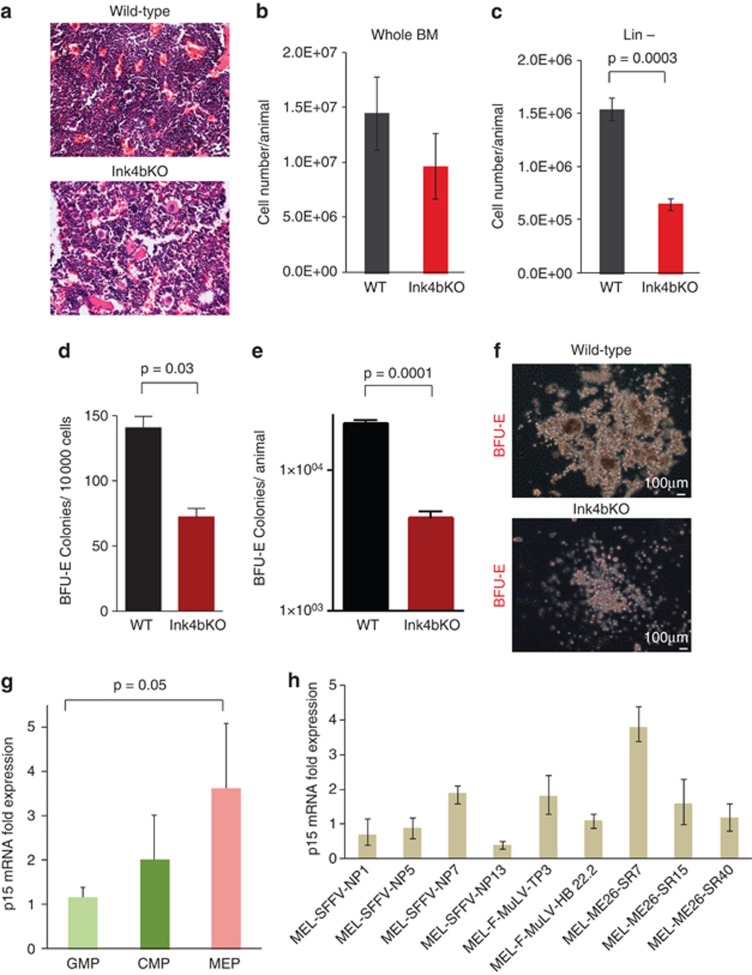Figure 1.
Function of p15Ink4b in erythroid lineage commitment. (a) Decalcified, paraffin-embedded, hematoxylin and eosin (H&E) sections of bone marrow. (b) Total number of bone marrow cells isolated from the femur and tibia of wild-type (WT) and Ink4bKO mice (n=3). (c) Total number of Lin− cells isolated from the femurs and tibias of WT and KO mice (n=3). (d) Number of BFU-E colonies obtained from plating 10 000 of Lin− bone marrow cells in M3436 methylcellulose medium (n=6). (e) Total number of BFU-E colonies contained in the femurs and tibias of WT and Ink4bKO mice (n=6). (f) Representative pictures of BFU-E colonies. (g) Expression of p15Ink4b mRNA in sorted hematopoietic progenitor populations of WT mice. 18SrRNA was used as an internal control and depicted as fold change in mRNA compared with GMPs (n=9). (h) Expression of p15Ink4b mRNA in a panel of mouse erythroleukemia (MEL) cell lines. Cell lines were established from mice inoculated with spleen focus-forming virus (SFFV), Friend murine leukemia virus (F-MuLV) or a murine myb-ets-containing virus (ME26). 18SrRNA was used as an internal control and depicted as fold change of mRNA compared with the NP1 cell line (n=3).

